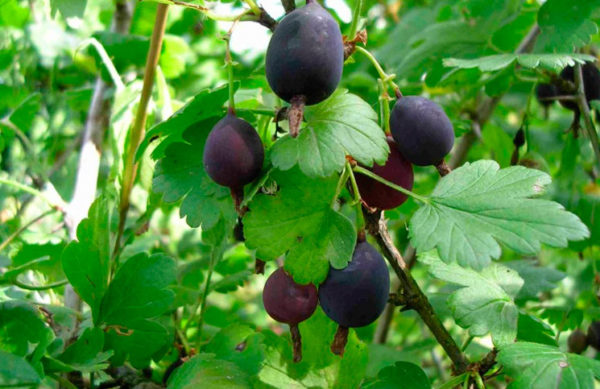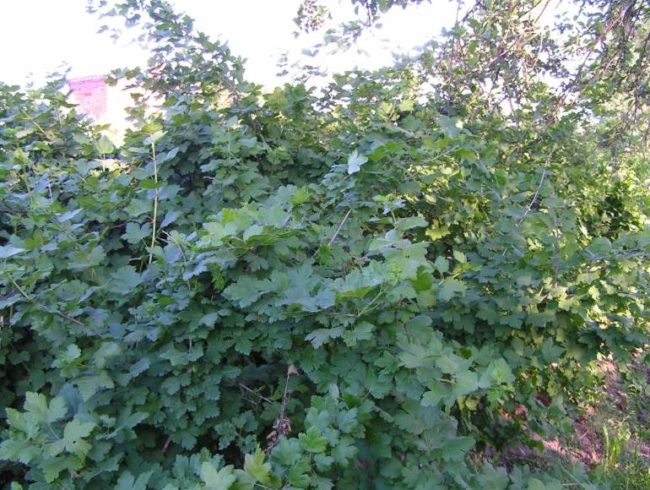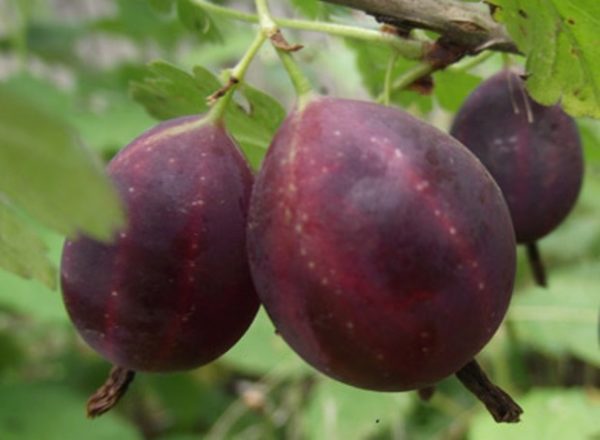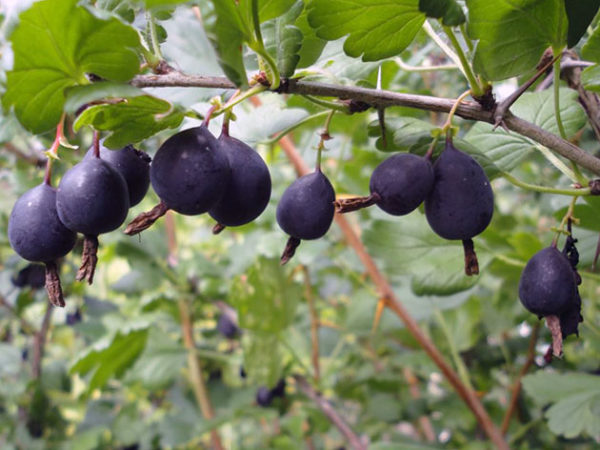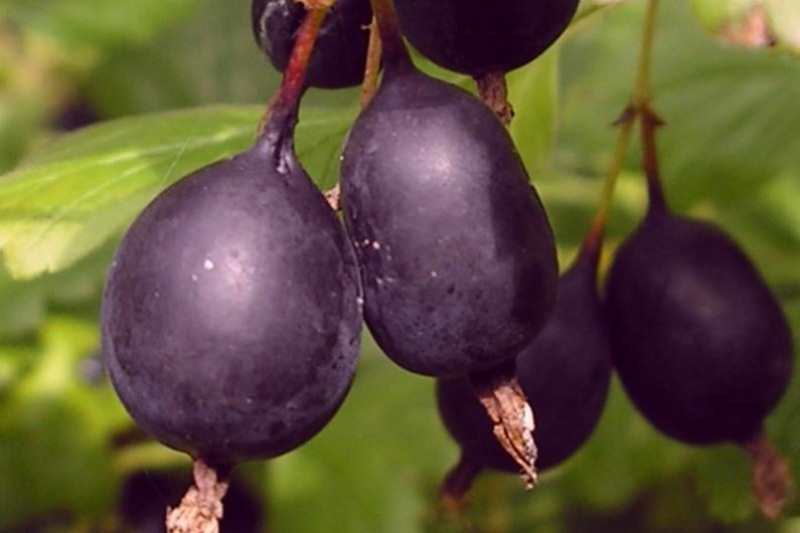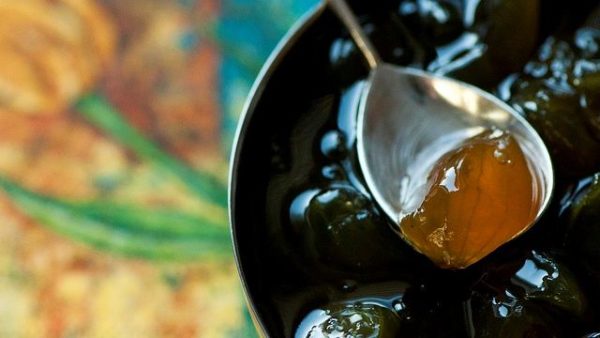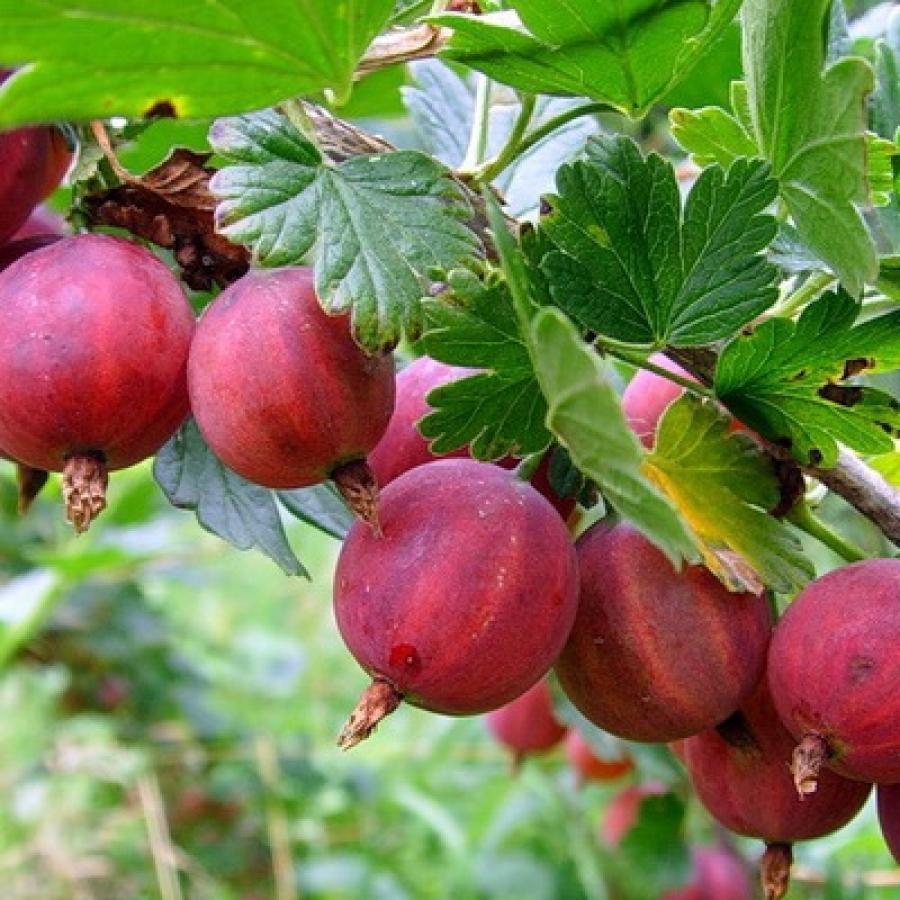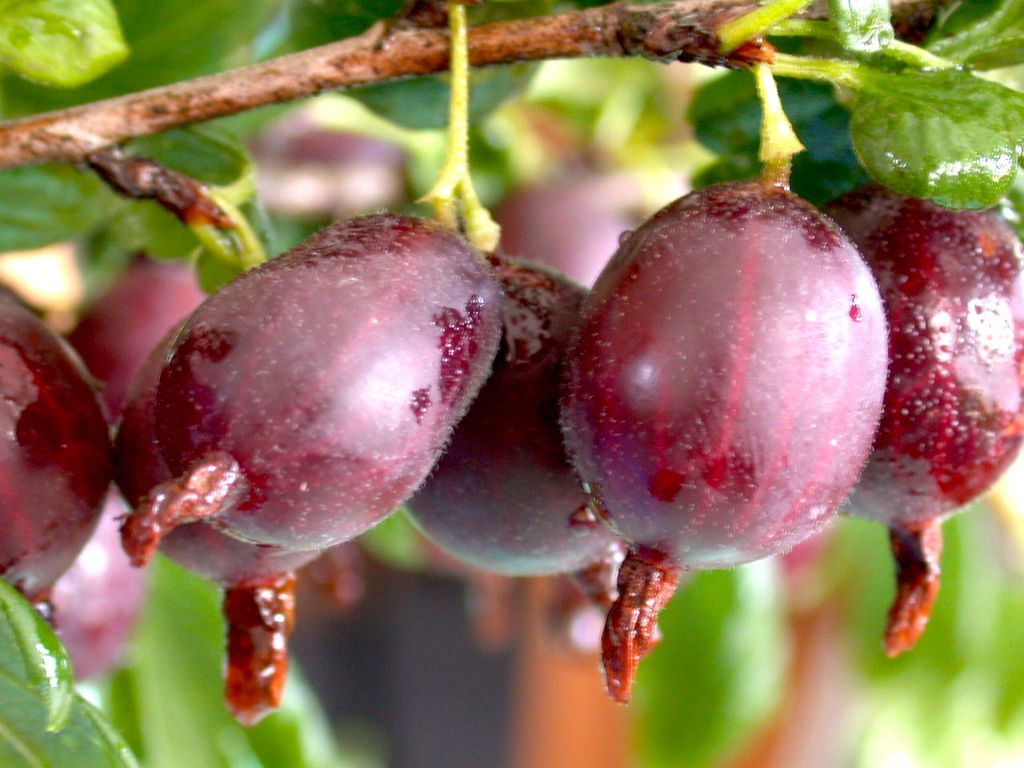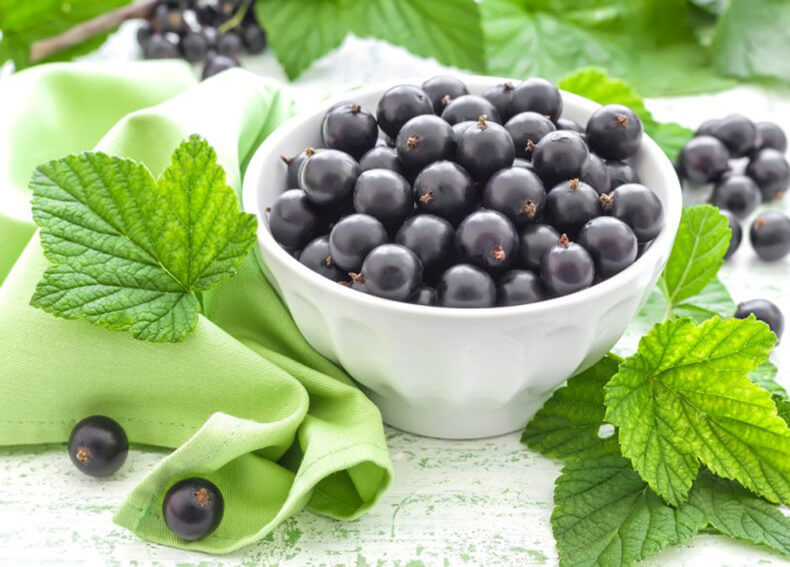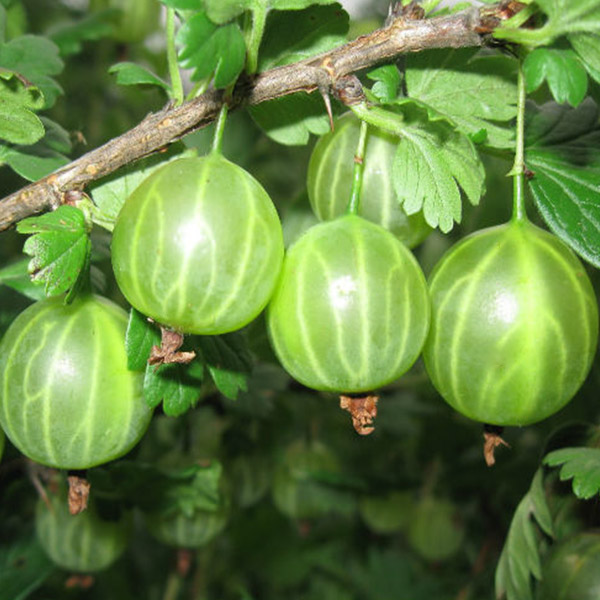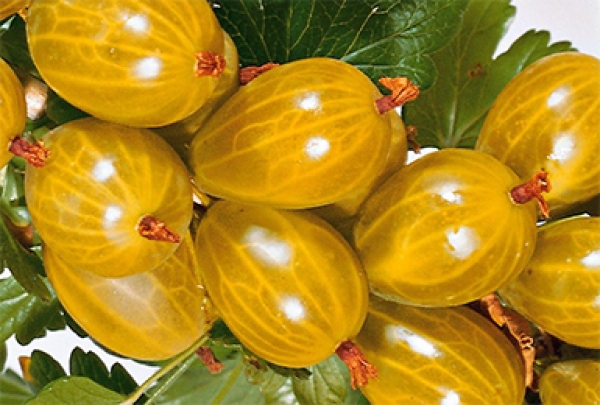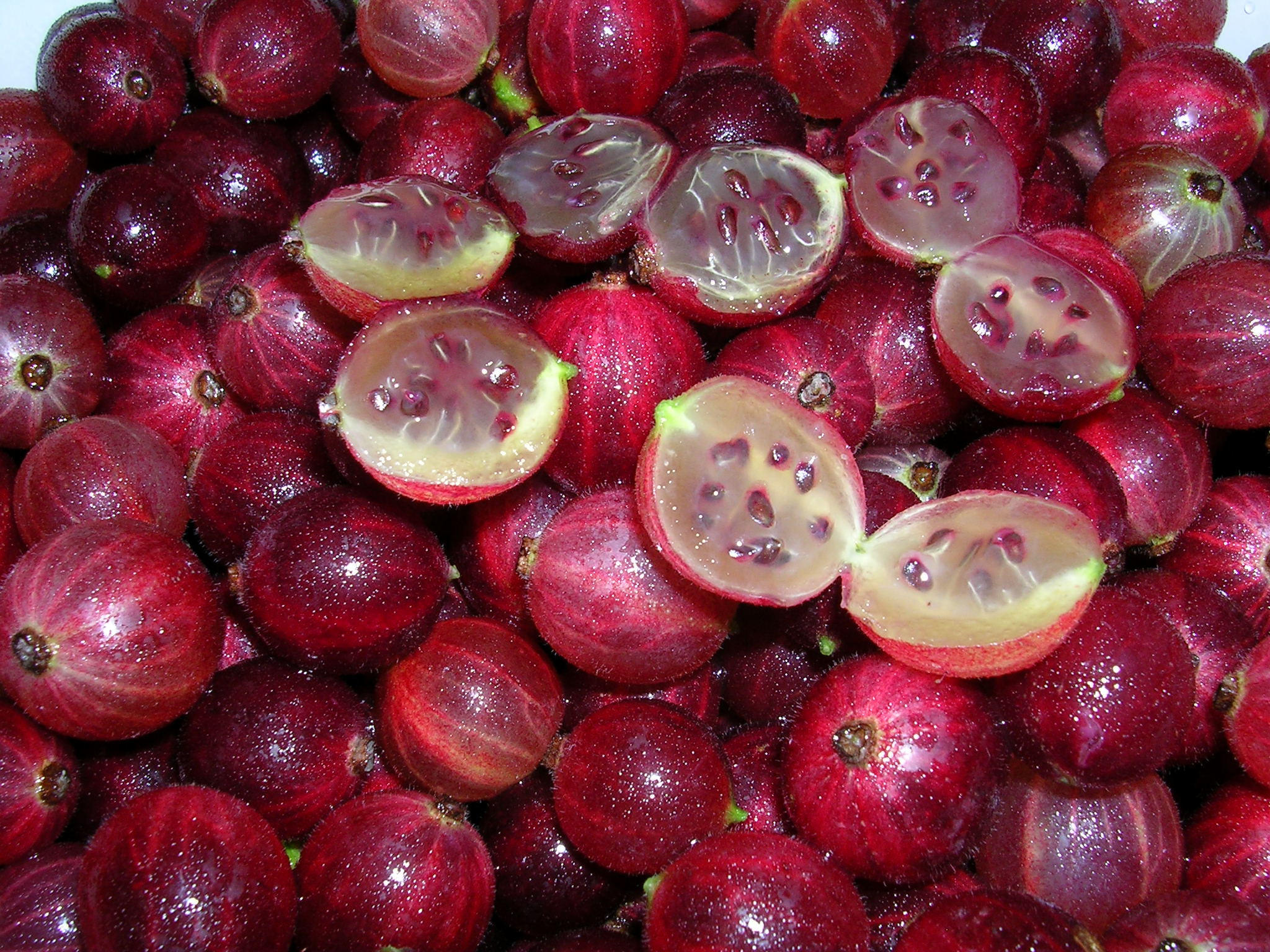Content:
Gooseberry "Black Negus" is an old variety with an amazing history and original taste. For a long time in the UK, gooseberries have been very popular. Gardeners have bred more than 1000 varieties of this berry of various tastes, sizes and colors. In pursuit of the variety, gooseberry varieties were imported from America. But along with the new species, a disease, previously unknown in Europe, was brought in - powdery mildew. Gardeners did not have time to study it and did not come up with a means of struggle. As a result, the disease quickly spread throughout the gardens and killed most of the gooseberry varieties. Only American varieties were not affected by the disease. But they had average taste and were not liked by gardeners.
The famous scientist breeder I. V. Michurin was engaged in breeding new crops. He started working on gooseberry varieties, crossing berries from America and Europe, and got a new hybrid. The berries had a dark color and for this the gooseberry was named "Black Negus". On the basis of this species, the scientist planned to work further with breeding purposes, but he liked the variety and became an independent culture, which received recognition from gardeners, which did not allow the variety to disappear.
Characteristics and features of black gooseberry
The berry variety has an original shape in the form of a small black pear. Their size is small, up to 2.5 cm in diameter. The fruit has a thin skin and the flesh is dark red. The taste is sweet, with a slight sourness. Gooseberries are used for making liqueurs, homemade wine, compotes. The drinks have a beautiful ruby hue.
The shrub is large: tall and spreading with arched shoots. It grows up to 1.5-2 meters. The plant has large bright green foliage with a downy. Flowering begins in May. The berries are arranged in pairs and one at a time on an elongated stalk. The fruits do not crack or crumble from the bush. Left uncleared, they hang on branches until late autumn. Ripening period is average, begins in late July or early August. The fruits are ripening at the same time.
Note! Negus is a gooseberry with large, almost 2 cm thorns. Because of this, it is difficult to care for the bush and harvest. But on the other hand, you can create a thorn hedge from gooseberry thickets. It will become an obstacle for people and animals and will not allow them to get into the garden.
To facilitate care and harvesting, standard cultivation is used. For this, one strong vertical shoot is left. The buds below and the shoots are removed. They make a support and tie the gooseberries to it. Productivity from one adult bush with good care reaches up to 7 kg.
The benefits of gooseberries
Gooseberry Negus has an extensive description of the beneficial properties of berries.
The gooseberry contains vitamins and useful trace elements:
- Vitamin C is found in large quantities in fruits. It helps the body fight infections and viruses;
- The berries contain B vitamins and trace elements that have a beneficial effect on the nervous system and the entire human body as a whole;
- Vitamins C and P, magnesium and potassium help the work of the heart and blood vessels;
- Vitamin A has a positive effect on eyesight and skin;
- Folic acid helps the female fetus develop fully during pregnancy;
- Pectin normalizes digestion, removes toxins and toxins;
- Fruits normalize blood pressure, relieve blood vessels of cholesterol;
- Anemia is cured with more iron;
- Gooseberries are low in carbohydrates, so they are harmless to diabetics and can be included in their diet, while providing the body with vitamins and fiber.
But berries have contraindications:
- Nursing mothers and allergy sufferers should be careful to eat gooseberries. Vitamin C can harm them;
- In case of diseases of the stomach and intestines, the berries are heat treated. High acidity of fruits can exacerbate diseases;
- Gooseberries should not be mixed with milk and other dairy products - there is a risk of diarrhea due to the laxative effect.
Planting gooseberries
Black Negus seedlings can be planted in spring, but if possible, it is better to postpone this work until autumn. They are planted in September - early October, a month and a half before the onset of stable frosty weather.
Gooseberry refers to light-loving crops, but if there is no other place, let's say a site in partial shade. The culture is not demanding on the soil and, in addition to heavy clay soil, tolerates any other. The relief of the site is preferable to be flat or even elevated. A lowland with a close occurrence of groundwater is destructive for a plant. The shrub will fully open and give a bountiful harvest on loose fertile soil rich in organic fertilizers.
Important! Before planting seedlings, the site is dug up and the roots of perennial weeds are selected. It is better to do this before planting, otherwise the thorny crop will not allow to remove the weeds in the near-trunk circle. When digging, humus, compost or complex fertilizers are applied.
Annual seedlings are easier to accept. For them, they dig a hole 40 cm wide and 50 cm deep. Water is poured into the pit to moisten the soil. The seedling is dipped with roots in a clay mash and lowered into a pit with a slope. The root collar is covered with 5 cm earth. The planted shoots are cut to the fifth bud. When planting several seedlings, take into account the height and spreading of the plant and leave a distance of 1.5-2 m between the bushes.
Care of Black Negus seedlings
Growing a variety of black gooseberries is not difficult, but in order to increase the fruiting period and extend the life of the shrub, they follow the recommendations for caring for the crop. To get rid of weeds, the trunks are mulched. This event will allow you to do without weeding and loosening.
The black negus does not like waterlogging of the soil, but it does not tolerate drought either. In the summer, it is watered abundantly 3-5 times per season. This must be done during flowering, when pouring the fruit, and necessarily a month before the onset of frost, so that the harsh winter does not harm the root system. Dry roots are more easily damaged than moist ones. Watered by drip method or intrasoil. Sprinkling is strictly prohibited.
Mulching for gooseberries is a must. The thicker the mulch layer, the more moisture will be retained near the bush, there will be less weeds, and the risk of freezing out during harsh winters will decrease. For mulch, take humus, compost, sawdust, straw, hay, pine needles or several components together.
The yield depends on the feeding. Fertilizers are applied from the second year of plant life after planting. In the spring, gooseberries are fed with humus or ammonium nitrate. In the fall, add superphosphate, potassium sulfate and scatter humus around the bush.
Gooseberries need trimming of small growth, thinning of the plant and removal of old non-fruiting shoots. In the spring, the tops on the bushes are shortened by a third.
Gooseberries are easily propagated by layering. If you want to propagate the bush in the spring, bend the shoot to the ground and put it in the ground, securing it in any convenient way. Water and shorten the top by a quarter. Water regularly and monitor the emergence of new shoots. After their regrowth, the plant is fed. In the fall, a new seedling is separated and planted in a permanent place.
Advantages and disadvantages
The gooseberry characteristic includes many benefits:
- Pleasant taste and many vitamins.Bright coloring makes it possible to decorate dishes with berries. Black gooseberry blanks are delicious and beautiful;
- Productivity. One bush consistently produces 5-7 kg of berries. Fruiting begins in the second year after planting, sometimes a little later;
- Transportability. Berries can be stored for up to 25 days during transportation. This allows gooseberries to be grown on a large scale;
- Disease and pest resistance. Powdery mildew does not affect black gooseberries, fungal infections are not afraid of him;
- Winter hardiness. Black Negus is grown throughout the country. He is not afraid of frosty winter and spring cold snap.
The variety has almost no flaws, except for the long and sharp thorn, which complicates the care of the plant. He is loved for its delicious berries, which also have a healing effect.
Black gooseberries can help with diseases, replenish the body's supply of nutrients and diversify the menu with delicious and healthy dishes. It is not surprising that the Black Negus gooseberry variety has been the leader among other gooseberry varieties for many years and has not lost its popularity among amateurs and professionals. This is a real prince in the gooseberry kingdom. Harvesting from berries is a lot of dishes: jam and confiture, gooseberry compote, many people love the recipe for wine. Black gooseberries taste like grapes.
The high yield and taste of the fruit outweigh the lack of the variety, which is hidden in its thorns, therefore many gardeners are happy to grow this gooseberry variety in their plots.
